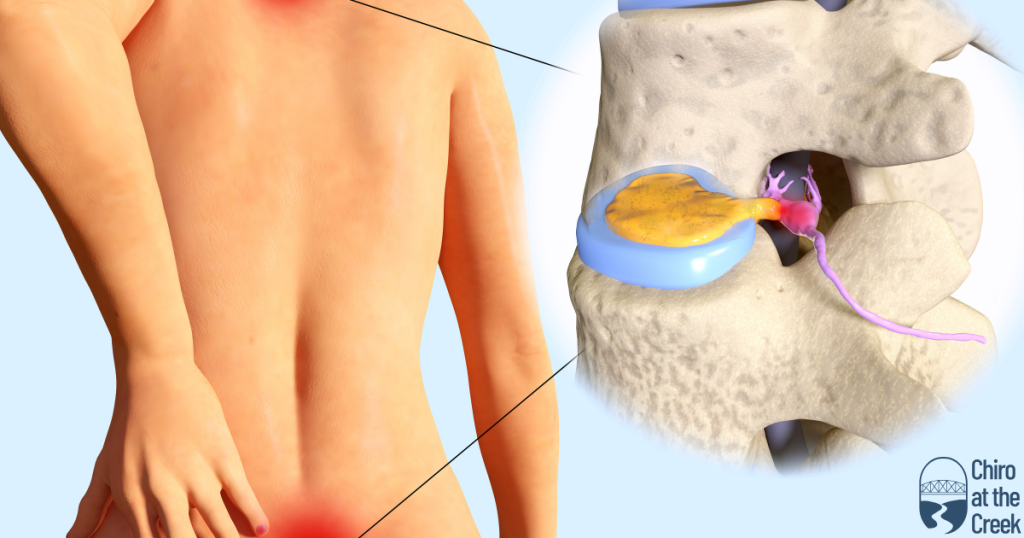Have you ever experienced a sharp, shooting pain down your leg when sitting for an extended period? This uncomfortable sensation, often described as a burning or tingling feeling, can be indicative of underlying spinal issues. Among the potential culprits for such leg pain, two common conditions stand out: sciatica and piriformis syndrome. As a chiropractor, understanding the distinctions between these two ailments is crucial for effective diagnosis and treatment. Let’s delve into the key differences between sciatica and piriformis syndrome, supported by research and insights from the chiropractic field.
What is Sciatica?
Sciatica is a well-known condition that affects the sciatic nerve, the longest nerve in the human body. This nerve runs from the lower back, through the buttocks, and down each leg. When the sciatic nerve is compressed or irritated, it can lead to a variety of symptoms, including sharp pain, numbness, and tingling that radiates down the leg. The most common cause of sciatica is a herniated or slipped disc in the lumbar spine, which puts pressure on the nerve roots.
Research supports the association between sciatica and lumbar disc herniation. A study published in the Journal of Manipulative and Physiological Therapeutics found that chiropractic manipulative treatment produced significant improvements in patients with acute sciatica due to lumbar disc herniation. Chiropractors employ various techniques, such as spinal adjustments and mobilization, to alleviate the pressure on the sciatic nerve and promote healing.
Differentiating Piriformis Syndrome
On the other hand, piriformis syndrome involves the piriformis muscle, a small muscle located in the buttocks near the hip joint. When this muscle becomes tight or spasms, it can compress the sciatic nerve, leading to symptoms similar to sciatica, such as pain, numbness, and tingling down the leg. However, the root cause of piriformis syndrome lies in the muscle itself, rather than a structural issue like a herniated disc.
Research on piriformis syndrome highlights the importance of chiropractic interventions in managing this condition. A systematic review published in the Journal of Chiropractic Medicine emphasized the effectiveness of chiropractic care, including adjustments and soft tissue therapy, in relieving piriformis syndrome symptoms. By addressing muscular imbalances and promoting proper alignment, chiropractors can help alleviate the pressure on the sciatic nerve caused by the tight piriformis muscle.
Chiropractic Approach to Sciatica and Piriformis Syndrome
Chiropractors take a holistic approach to treating sciatica and piriformis syndrome, focusing on restoring proper spinal alignment, improving nerve function, and addressing muscular imbalances. Through a combination of manual adjustments, therapeutic exercises, and lifestyle recommendations, chiropractors aim to not only relieve pain but also enhance overall spinal health and function.
A study published in the Journal of Chiropractic Medicine highlighted the positive outcomes of chiropractic care for patients with sciatica, reporting significant pain reduction and functional improvement. Similarly, research on piriformis syndrome has shown that chiropractic interventions can effectively alleviate symptoms and improve patients’ quality of life.
In conclusion, while both sciatica and piriformis syndrome can cause leg pain when sitting too long, they originate from different sources within the body. Sciatica typically stems from spinal issues like herniated discs, while piriformis syndrome involves muscular dysfunction in the buttocks. Chiropractors play a crucial role in diagnosing and treating these conditions, utilizing research-backed techniques to provide relief and restore optimal spinal function.
If you are experiencing pain shooting down your leg, consulting with a chiropractor can help identify the underlying cause and develop a personalized treatment plan to address your specific needs. By combining hands-on care with evidence-based practices, chiropractors offer a holistic approach to managing sciatica, piriformis syndrome, and other musculoskeletal issues, promoting long-term health and well-being.













